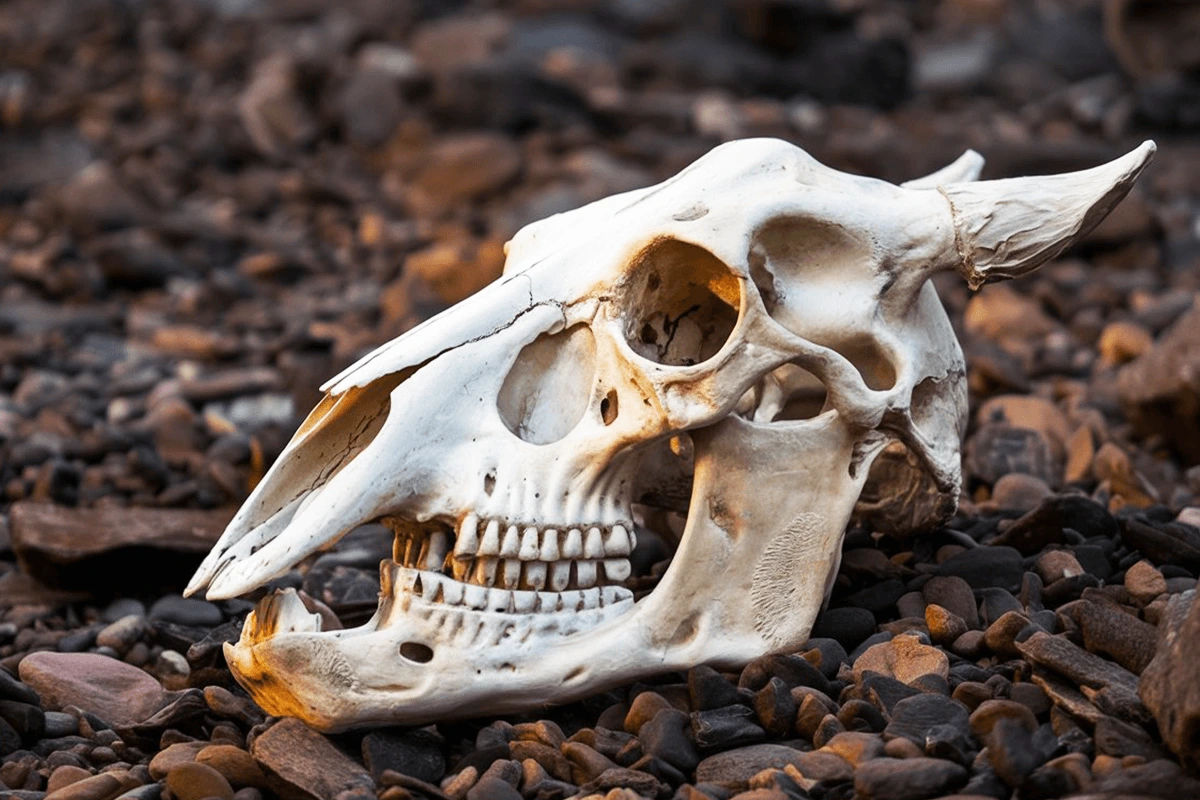The horse skull is a striking symbol that embodies both strength and beauty, blending natural form and function. Throughout history, people have admired horses not only for their speed and endurance but also for the intricate structure of their skulls. With its elongated shape, detailed sutures, and robust dental features, the horse skull reflects the animal’s evolutionary journey and adaptability.
Beyond its biological significance, the horse skull carries profound cultural meaning. Ancient civilizations incorporated it into myths, rituals, and artistic expressions, viewing it as a representation of endurance, wisdom, and spiritual protection. In some traditions, horse skulls play key roles in seasonal festivals and storytelling, symbolizing the cyclical nature of life and death. Artists and sculptors have long drawn inspiration from its unique contours, using it to explore themes of mortality, power, and grace.
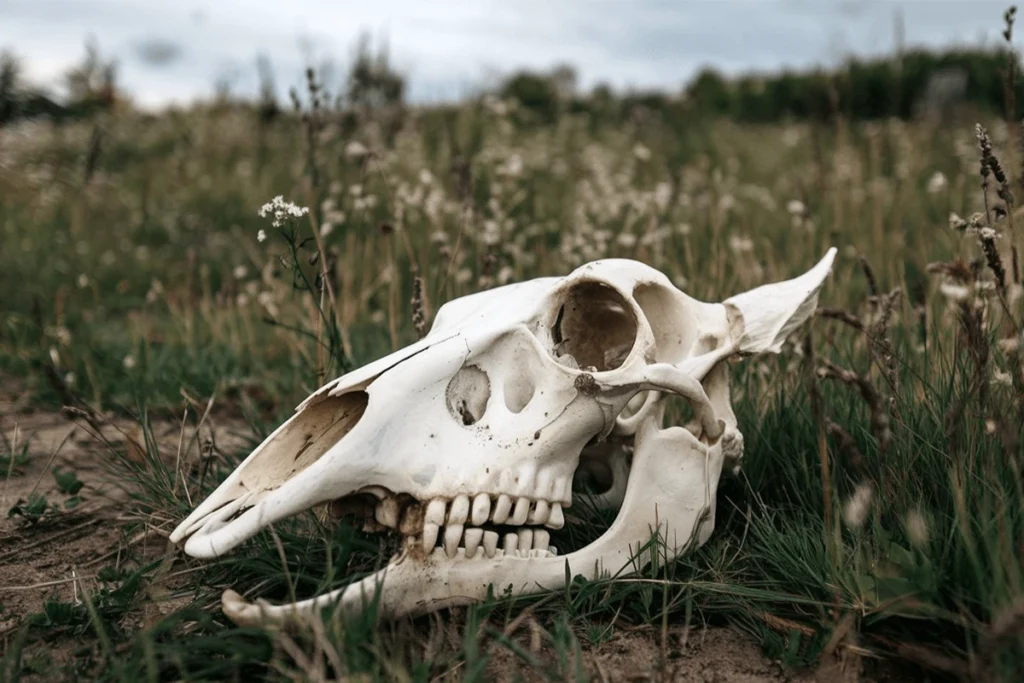
Understanding the anatomy of the horse skull offers insights into the animal’s life and evolution. Features like large eye sockets for keen vision and a sturdy jaw for grazing tell a story of adaptation and survival. Studying horse skulls allows scientists, veterinarians, and enthusiasts to appreciate how horses evolved into one of humanity’s most valued companions.
This exploration delves into the anatomy, cultural significance, and timeless appeal of the horse skull. Whether you’re an equestrian enthusiast, an artist, or simply fascinated by animal anatomy, the horse skull provides a captivating lens through which to view the intersection of power and beauty.
Anatomy of the Horse Skull
The Structure and Key Components
The horse skull consists of several interconnected bones that work together to provide protection, support, and functionality. The mandible, or lower jaw, plays a crucial role in chewing and grinding food, thanks to its strong structure and powerful muscles. The nasal bone forms the bridge of the horse’s face, contributing to the elongated profile that helps enhance airflow and breathing efficiency. The teeth, especially the molars and incisors, show clear adaptations for grazing, with a high-crowned structure designed to withstand constant wear from coarse vegetation.
Skull sutures, the joints where different bones meet, give the horse skull flexibility and resilience. These sutures allow slight movement, which helps absorb shock and prevent fractures during intense physical activity. The cranial cavity, which houses the brain, protects the horse’s neurological functions while providing enough space for sensory processing and motor control. Large orbits, or eye sockets, allow horses to have a wide field of vision, an essential trait for detecting predators in the wild.
Each component of the horse skull contributes to its overall strength and efficiency. The fusion of strong bones and adaptive features ensures that horses can perform daily tasks such as feeding, communicating, and surviving in their environments with remarkable efficiency.
Unique Features of the Equine Horse Skull
The horse skull stands out among mammals due to its distinctive adaptations that reflect the animal’s evolutionary needs. One of the most noticeable features is its elongated structure, which enhances the horse’s ability to consume fibrous plant material efficiently. This extended facial region allows for a large nasal passage, which improves oxygen intake and supports high levels of physical endurance.
Another unique trait lies in the horse’s teeth, which continue to grow throughout its lifetime. Unlike many other mammals, horses rely on a grinding motion to break down tough vegetation, and their constantly erupting teeth compensate for the wear and tear caused by their diet. The alignment of their teeth plays a critical role in digestion and overall health, making dental anatomy an essential aspect of equine care.
Additionally, the placement of the eyes on the sides of the skull provides nearly panoramic vision. Horses can detect movement from great distances, giving them an evolutionary advantage in avoiding predators. The lightweight but sturdy bone structure also allows horses to maintain speed and agility, traits that have made them invaluable companions in work, sport, and warfare.
The overall shape of the skull reflects both power and grace. Strong jaw muscles, large nasal openings, and finely adapted bone structures make the horse skull a prime example of evolutionary refinement tailored for survival and efficiency.
Comparing Horse Skull with Other Mammals
When comparing horse skulls to those of other mammals, significant differences highlight the horse’s unique adaptations. Unlike carnivores such as dogs and cats, which possess sharp canines for tearing meat, horses feature a dental structure optimized for grinding plant material. Their molars have complex ridges that help break down fibrous food, a feature absent in many other herbivores.
In contrast to ruminants like cows and sheep, horses have a more elongated skull and lack a multi-chambered stomach. This distinction means they must chew their food more thoroughly before swallowing, relying on their specialized dentition to aid digestion. Unlike smaller herbivores, horses possess a well-defined diastema, or gap between their incisors and molars, which allows them to hold and sort food effectively.
Additionally, compared to predators like wolves, the horse skull prioritizes endurance over bite strength. Horses rely on their long nasal passages to maximize oxygen intake during high-speed runs, whereas carnivores have shorter, more compact skulls designed for delivering powerful bites.
By examining these differences, it becomes clear that the horse skull embodies a perfect balance of form and function, enabling horses to thrive as prey animals with exceptional speed, endurance, and grazing efficiency.
Symbolism and Cultural Significance
Horse Skulls in Folklore and Mythology
Horse skulls have long held significance in folklore and mythology, symbolizing strength, protection, and spiritual connection. In Celtic traditions, horse skulls played a key role in rituals and storytelling, representing power and otherworldly guidance. One notable example is the Welsh tradition of Mari Lwyd, where a decorated horse skull is carried on a pole during winter celebrations. This custom involves participants engaging in rhyming challenges while symbolizing the eternal struggle between light and darkness.
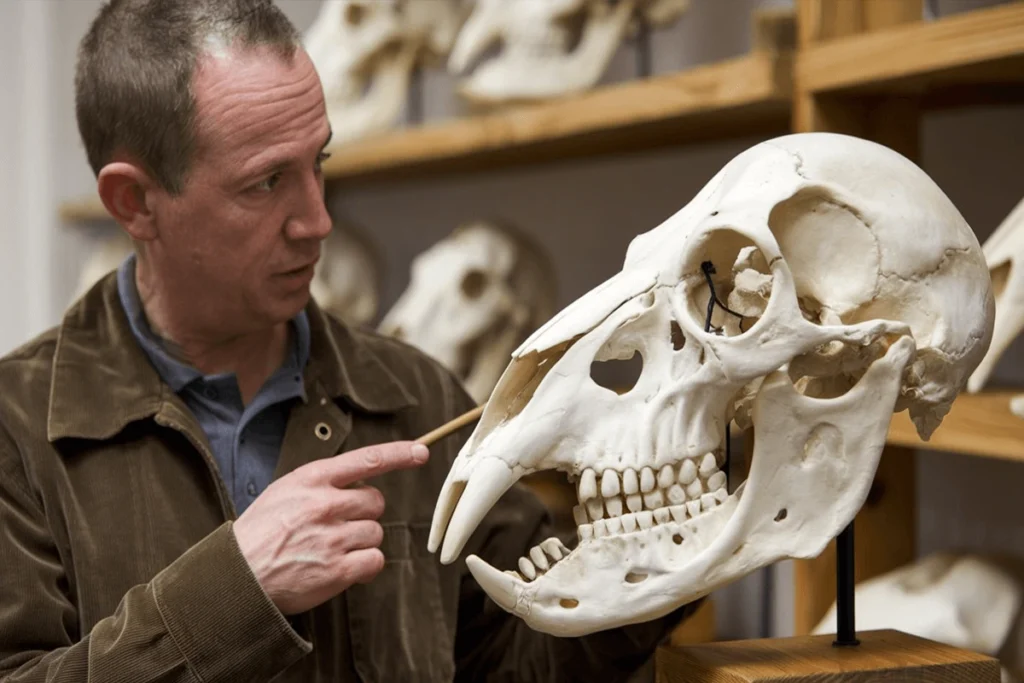
In Norse mythology, warriors and shamans revered horse skulls as talismans of strength and protection. These skulls were believed to grant power in battles or spiritual journeys, with the horse serving as a sacred animal linked to gods like Odin. Placing horse skulls in homes or burial sites was thought to provide spiritual protection and ensure safe passage to the afterlife.
For Native American tribes, horse skulls became an important spiritual symbol after horses were integrated into their culture. These skulls represented freedom, endurance, and guidance, often being used in ceremonies to honor fallen warriors or celebrate the horse’s spirit. Myths and stories connecting horse skulls to wisdom were passed down, preserving the bond between humans and horses for future generations.
Even in modern times, horse skulls retain their symbolic significance. Many cultural groups and enthusiasts revive ancient customs, honoring their heritage and keeping these captivating traditions alive.
Horse Skull Rituals and Historical Uses
Throughout history, people have used horse skulls in various rituals and practices, believing in their protective and symbolic power. In rural European communities, farmers buried horse skulls beneath the floors of barns and homes to bring good fortune and ward off evil spirits. These skulls, often placed near entrances or hearths, served as guardians against misfortune and helped amplify sound within the structures, making them useful for practical and spiritual purposes.
Many cultures used horse skulls in burial rites and memorials to honor the animal’s contributions to society. In ancient steppe civilizations, such as the Scythians and Mongols, people included horse skulls in warrior graves to signify their strength and companionship in the afterlife. Archaeological discoveries reveal that some horse skulls appeared in ceremonial arrangements, showing the deep respect people held for these animals.
Ritualistic practices also featured horse skulls in music and performance. Scandinavian and Baltic cultures once used horse skulls as instruments, mounting them on resonating structures to create deep, haunting sounds during festivals or ceremonial gatherings. This practice reinforced the connection between the horse and the natural world, emphasizing its role in both life and death.
Across the globe, people integrated horse skulls into their spiritual and agricultural traditions, recognizing them as powerful symbols of resilience, prosperity, and transformation. Even today, some communities continue these age-old customs to maintain their cultural heritage and spiritual beliefs.
Modern Representation in Art and Literature
Artists and writers often draw inspiration from horse skulls, using their striking imagery to explore themes of mortality, power, and beauty. Sculptors highlight the raw elegance and intricate anatomy of horse skulls, which symbolize both strength and fragility. Photographers and painters focus on these skeletal forms to capture haunting beauty and evoke profound emotions through their work.
In literature, horse skulls are frequently used to represent transformation, resilience, and the passage of time. They are especially prominent in the gothic and fantasy genres, where they convey mystery and ancient power. Writers often incorporate horse skulls for their historical and cultural symbolism, enriching stories with themes of survival, nature, and the spiritual bond between humans and animals.
Contemporary tattoo artists create striking designs of horse skulls to symbolize personal strength, endurance, and a deep appreciation for nature. Many individuals choose these tattoos as a tribute to the spirit of the horse, embodying qualities of freedom, resilience, and beauty.
Musicians and performance artists have also adopted horse skulls as symbolic props in concerts, theatrical productions, and music videos. Their skeletal form conveys raw emotion and untamed energy, making them powerful elements in artistic expressions across genres.
Whether in fine art, fashion, or storytelling, horse skulls remain compelling icons. Their beauty and symbolic depth continue to captivate audiences and inspire creators worldwide.
The Power and Beauty of The Horse Skull
Why Horse Skulls Are Seen as Powerful Symbols
People view horse skulls as powerful symbols because they represent strength, endurance, and the untamed spirit of the horse. Throughout history, various cultures have associated horse skulls with attributes such as resilience and dominance. Warriors and leaders have revered them as emblems of power, using them in battle insignias, banners, and ceremonial artifacts to project authority and courage. The horse’s role in human civilization—as a trusted companion in war, travel, and agriculture—has further reinforced its skull as a lasting symbol of perseverance and loyalty.
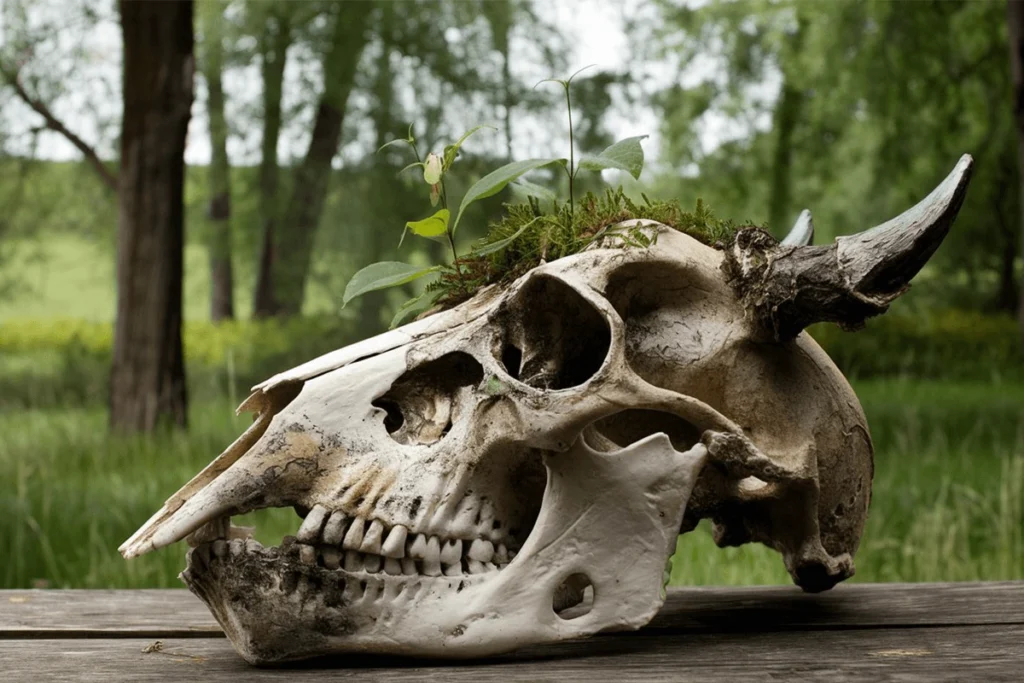
In many ancient traditions, the horse skull serves as a link between the physical and spiritual worlds. Shamans and spiritual leaders have used horse skulls in rituals to harness the animal’s perceived energy and wisdom, believing they could channel the horse’s spirit for guidance and protection. The shape and structure of the skull, with its elongated profile and prominent features, symbolize keen perception and foresight—qualities often attributed to horses in mythology and folklore.
Horse skulls also carry an element of mystique and power due to their association with life and death. In some cultures, people believe the presence of a horse skull wards off evil spirits and brings strength to those who honor it. Whether displayed in homes, barns, or sacred spaces, the horse skull remains a testament to the animal’s enduring legacy and the deep respect humans have for it.
Aesthetic Appeal in Artistic Depictions
Artists find inspiration in the horse skull’s unique blend of strength and delicacy, using it as a powerful visual element in sculptures, paintings, and installations. The intricate details of the skull, from the sweeping curves of the nasal cavity to the sharp edges of the jawbone, create a striking contrast that captures both beauty and rawness. Many artists explore these contrasts by incorporating horse skulls into themes of life, death, and transformation, showcasing their ability to evoke deep emotion and contemplation.
Sculptors often highlight the symmetry and complexity of horse skulls by working with materials such as bronze, marble, and wood, emphasizing the skeletal form’s natural elegance. Photographers and painters frequently use horse skulls in their compositions to create haunting yet captivating images that symbolize strength, wisdom, and the passage of time. The hollow eye sockets and rugged texture of the bone allow for dramatic lighting and shadow effects, adding to the visual impact.
In the world of tattoo art and fashion design, the horse skull has become a symbol of individuality and resilience. Tattoo artists craft intricate designs that incorporate the skull into larger compositions featuring flowers, feathers, or geometric patterns, blending elements of beauty with the raw essence of nature. Fashion designers often use horse skull imagery in clothing and accessories, bringing a touch of edgy sophistication that speaks to themes of power and endurance.
The aesthetic appeal of the horse skull extends beyond traditional art forms, influencing home décor, jewelry, and even interior design. People incorporate replicas and stylized representations of horse skulls into their living spaces to create a sense of connection to nature, history, and the timeless allure of equine beauty.
Cultural Interpretations of Beauty
Different cultures interpret the beauty of horse skulls in unique ways, often drawing on their historical and spiritual connections to the animal. In Western cultures, people admire the horse skull for its association with freedom, strength, and adventure. Cowboys, ranchers, and equestrians view the skull as a representation of the horse’s enduring contribution to human life, incorporating it into artwork, logos, and décor that celebrate the rugged beauty of the equine world.
In Celtic and European folklore, the horse skull takes on a more mystical and ceremonial significance. Traditions such as Mari Lwyd in Wales use decorated horse skulls as part of seasonal celebrations, seeing them as representations of renewal and the cycle of life and death. The adornments, often featuring ribbons, paint, and fabric, highlight the belief that beauty lies in transformation and storytelling.
Native American cultures approach the beauty of horse skulls with deep reverence, considering them sacred symbols of harmony with nature. Many tribes integrate horse skull imagery into beadwork, carvings, and ceremonial dress to honor the horse’s spirit and acknowledge its role in their way of life. They see beauty in the skull’s form not just for its physical structure but for what it represents—strength, wisdom, and the unbreakable bond between horse and human.
In contemporary culture, people appreciate the horse skull’s beauty in a more abstract and symbolic sense. Fashion designers, musicians, and artists use it as an emblem of rebellion, resilience, and untamed elegance. Whether displayed in minimalist art or elaborate installations, the horse skull continues to captivate with its raw, natural beauty and timeless appeal.
Across all interpretations, the beauty of the horse skull lies in its ability to convey powerful messages of strength, endurance, and transformation, making it a compelling symbol that resonates with people worldwide.
Studying and Identifying The Horse Skull
A Guide to Horse Skull Identification
Identifying a horse skull requires careful attention to key anatomical features that distinguish it from other animal skulls. Observers can recognize a horse skull by its elongated structure, prominent nasal cavity, and well-defined teeth adapted for grazing. The shape of the skull, with its long, straight profile and large eye sockets, provides immediate visual clues that set it apart from the skulls of other mammals.
One of the most critical aspects of horse skull identification involves examining the teeth. Horses have a unique dental pattern characterized by high-crowned (hypsodont) teeth that continue to grow throughout their lifetime. The presence of incisors at the front and broad, ridged molars in the back helps experts confirm the skull’s identity. Additionally, the gap known as the diastema, which separates the front and back teeth, serves as a distinct marker for equine skulls.
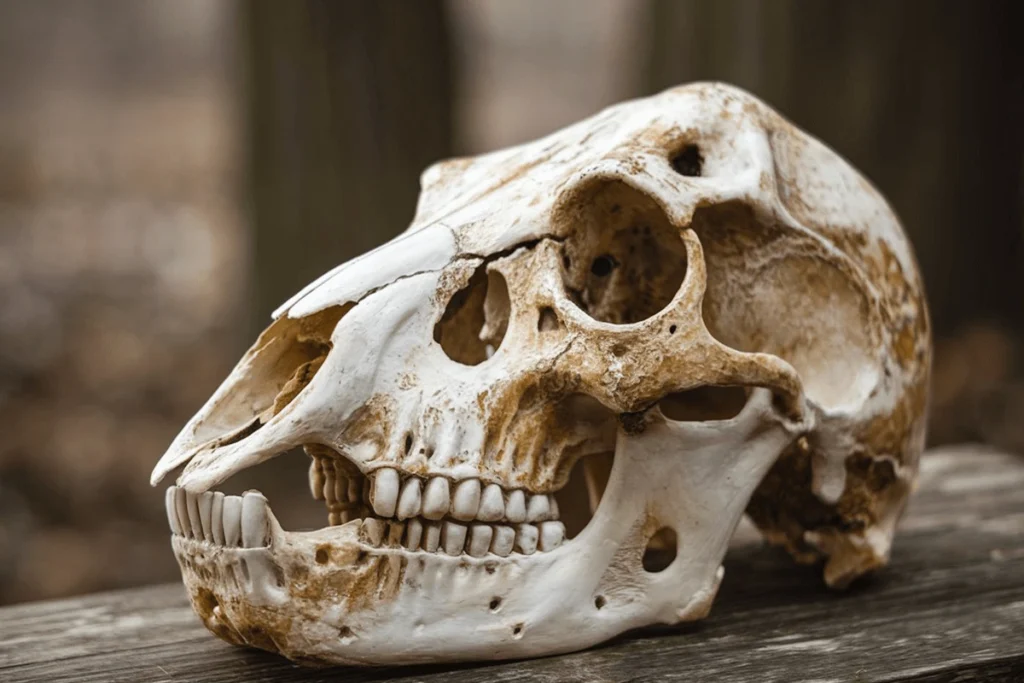
Another useful identifying feature lies in the cranial sutures—the lines where different skull bones fuse together. In horses, these sutures create intricate patterns that indicate the animal’s age and development stage. Younger horses have more visible sutures, while older ones show smoother fusion over time.
Comparing the horse skull to those of similar herbivores, such as cows or deer, helps avoid misidentification. Cattle skulls, for example, display broader, more rounded features with differently shaped dental structures, whereas horse skulls maintain a streamlined, elongated shape optimized for speed and endurance. Paying close attention to these anatomical details ensures accurate identification and a deeper understanding of the skull’s unique characteristics.
How to Study a Horse Skull for Anatomy Purposes
Studying a horse skull requires a methodical approach to fully appreciate its structure, function, and evolutionary adaptations. Researchers, veterinarians, and enthusiasts often begin by analyzing the skull’s overall shape and proportions, noting how the elongated profile supports the horse’s lifestyle as a grazing and running animal.
Breaking down the study into key regions—such as the cranial, facial, and dental areas—allows for a thorough examination. The cranial section, which houses the brain, provides insight into the horse’s sensory capabilities, including vision and smell. By closely inspecting the size and positioning of the eye sockets (orbits), students can better understand how horses achieve their wide field of vision, crucial for detecting predators. The nasal cavity, with its expansive structure, highlights the horse’s ability to process large volumes of air for sustained physical activity.
The dental structure demands special attention during study sessions. Horses rely on their teeth for grinding fibrous plant material, and their continuous growth means that wear patterns reveal valuable clues about diet and age. A detailed examination of tooth shape, enamel ridges, and wear levels offers practical insights into equine health and nutrition.
Handling and observing real skull specimens or high-quality replicas provide the best learning experience. Using tools such as calipers to measure bone structures, reference guides for anatomical terminology, and comparative charts featuring different horse breeds enhances the study process. Whether for educational purposes or personal interest, studying a horse skull offers a fascinating glimpse into the intricate design that supports this powerful and graceful animal.
The Role of Fossilized Horse Skulls in Science
Fossilized horse skulls play a crucial role in understanding the evolutionary history of the horse species and their adaptation to changing environments. Paleontologists examine these fossils to trace the development of modern horses from their ancient ancestors, revealing how they evolved over millions of years from small, multi-toed creatures to the large, single-hoofed animals known today.
Fossils provide essential evidence about changes in skull structure, tooth patterns, and jaw mechanics that helped horses adapt to different climates and diets. Early horse ancestors, such as Eohippus, possessed smaller skulls and a more varied dental structure suited for browsing on soft vegetation. Over time, fossilized remains show a gradual transformation toward larger skulls with high-crowned teeth, optimized for grazing on tougher grasses in open plains.
Researchers use fossilized horse skulls to compare the evolutionary trajectory of equines with other mammalian species. By analyzing the bone density, suture patterns, and changes in nasal cavities, scientists gain insights into how horses adapted to factors such as climate shifts and habitat changes. These fossils also help identify extinct horse species and establish connections between ancient equine populations and modern breeds.
Beyond evolutionary research, fossilized horse skulls contribute valuable information to fields such as comparative anatomy and veterinary science. By studying ancient skull structures, scientists better understand skeletal disorders, developmental patterns, and the genetic traits that have persisted in modern horses.
Museums, universities, and private collections often display fossilized horse skulls to educate the public about the fascinating journey of equine evolution. These fossils serve as tangible links to the past, illustrating how horses have played a vital role in ecosystems and human societies for thousands of years.
The Enduring Legacy of the Horse Skull
Why the Horse Skull Continues to Fascinate
The horse skull captivates people across generations due to its unique blend of strength, elegance, and deep cultural significance. Its striking appearance, with elongated features and intricate bone structures, draws attention from artists, scientists, and historians alike. The skull’s ability to embody themes of power, endurance, and beauty allows it to remain relevant in various fields, from fine art to scientific research.
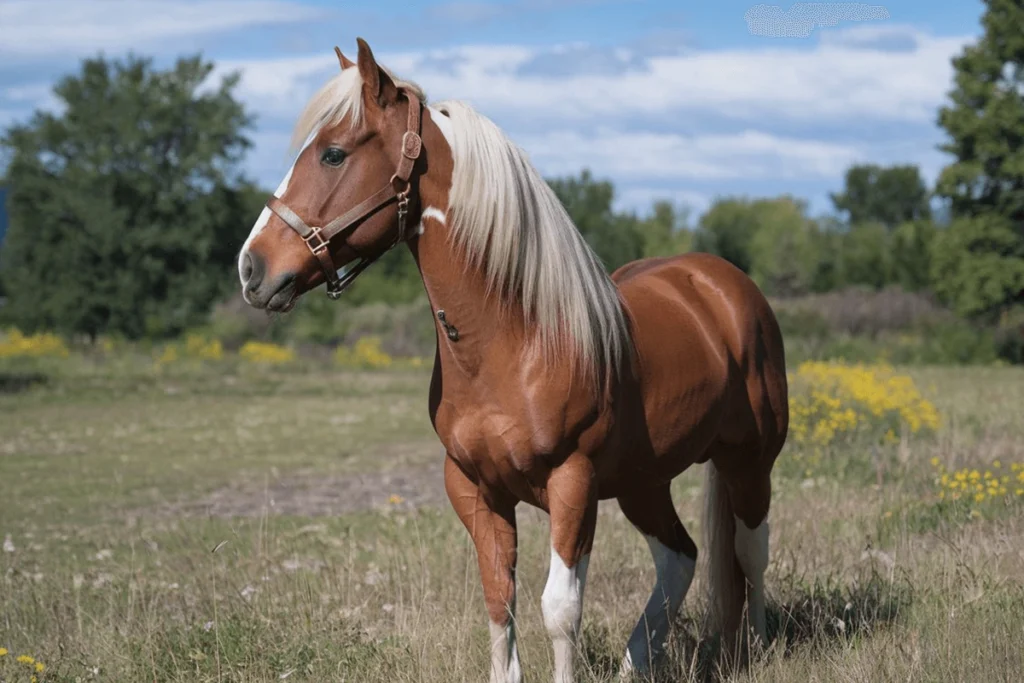
In the world of art and symbolism, the horse skull often represents life’s transience and the balance between strength and fragility. Sculptors, painters, and photographers incorporate horse skull imagery into their work to evoke emotions tied to mortality, resilience, and the untamed spirit of the horse. The natural symmetry and intricate details of the skull offer endless inspiration for creative expression, making it a timeless subject in visual storytelling.
Beyond aesthetics, the horse skull continues to fascinate because of its historical and cultural associations. In many traditions, the horse holds a revered status, symbolizing freedom and companionship. Ancient customs that involve horse skulls, such as the Welsh Mari Lwyd tradition, highlight their enduring place in folklore and spiritual practices. The fascination stems not only from the skull’s physical form but also from the stories and beliefs surrounding it.
Scientific interest in horse skulls also fuels public fascination. Paleontologists and biologists study horse skulls to uncover the evolutionary adaptations that have allowed horses to thrive in diverse environments over millions of years. These studies reveal fascinating insights into equine development, helping people understand how horses evolved from small, multi-toed ancestors into the powerful animals we know today. Whether in museums, educational programs, or private collections, the horse skull continues to spark curiosity and admiration.
Preserving Horse Skulls for Educational Purposes
Preserving horse skulls is vital for education, offering students, researchers, and enthusiasts hands-on learning experiences. Proper preservation ensures the skulls remain intact, enabling future generations to study their anatomy and historical importance.
Educators and scientists use preserved horse skulls to teach anatomy, focusing on features like the mandible, nasal cavity, and teeth. These specimens help students understand how the horse’s skeletal structure supports its diet, movement, and function. Veterinary schools, equine studies programs, and museums rely on these skulls to illustrate real-world applications in fields like equine healthcare and biomechanics.
Preservation begins with cleaning to remove organic matter without damaging the bone. Techniques like maceration (soaking in water for natural cleaning), dermestid beetles (consuming flesh without harming the bone), and whitening agents are used to clean and stabilize the skull. Once cleaned, experts seal the skull to protect it from environmental factors like moisture and light.
Museums and educational institutions store and display preserved skulls carefully, maintaining controlled environments to prevent deterioration. Proper labeling and documentation provide context for research and education.
Advancements in 3D scanning and printing enable the creation of detailed replicas, allowing for hands-on learning while protecting original specimens. Preserved horse skulls, whether physical or digital, remain valuable tools for educating about equine anatomy and history, fostering deeper understanding and appreciation.
Looking to the Future: New Discoveries and Trends
Exciting discoveries and emerging trends are reshaping the study and appreciation of horse skulls. Researchers are uncovering new insights into equine evolution, biomechanics, and cultural significance, expanding our understanding of these fascinating structures. Advances in technology provide innovative tools that enhance our exploration of horse skulls.
One promising area of research involves genetic analysis of horse skulls. By examining DNA from ancient specimens, scientists can trace migration patterns and domestication histories, shedding light on how horses adapted to diverse environments and their evolving relationship with humans.
Archaeological findings also reveal new uses for horse skulls in ancient societies. Excavations of burial sites and ceremonial artifacts provide deeper insight into the roles horses played in rituals, warfare, and daily life, offering a richer understanding of their cultural significance.
Technological advancements like 3D modeling and virtual reality are transforming how we study horse skulls. High-resolution scans enable detailed virtual reconstructions, allowing researchers and students to explore every aspect of the skull without physical handling, making horse skull studies more accessible globally.
Sustainable preservation practices are another growing trend. Conservationists and museum curators focus on ethical sourcing and environmentally-friendly methods to ensure the responsible study and display of horse skulls. These efforts help balance educational value with respect for the animals they represent.
As public interest in horse skulls continues to rise, driven by their presence in art, science, and culture, new discoveries and innovations will keep them a source of fascination and inspiration for generations to come.
Conclusion
The horse skull symbolizes strength, beauty, and history, captivating people across cultures and disciplines. Its intricate structure fascinates scientists, artists, and enthusiasts, offering valuable insights into equine anatomy, evolution, and cultural significance. Whether studied for education, admired in art, or revered symbolically, the horse skull remains a subject of intrigue.
Scientifically, horse skulls reveal the evolutionary journey of Equus ferus caballus, helping researchers trace their development from ancient ancestors to modern companions. Analyzing bone structures and teeth provides insights into their adaptation and contributions to human progress, deepening our understanding of equine biology and their historical role.
Culturally, horse skulls hold deep meaning, appearing in myths, folklore, and art across centuries. From the Welsh Mari Lwyd tradition to Native American depictions, horse skulls symbolize endurance, resilience, and transformation, making them timeless icons in literature and ceremonies.
Preserving horse skulls ensures future generations can study and appreciate them. Museums, schools, and collectors use advanced techniques like 3D modeling and digital archiving to maintain these specimens. Preservation efforts honor the legacy of horses and showcase their intricate natural beauty.
As interest grows, new discoveries and innovations will enhance our understanding of horse skulls. Scientific research, sustainable preservation, and artistic interpretations will keep fascination alive. The horse skull stands as a powerful reminder of the enduring bond between humans and horses.
Learn More about Pets From HERE!
Discover good stuff for your Pet On Pet MD Official
